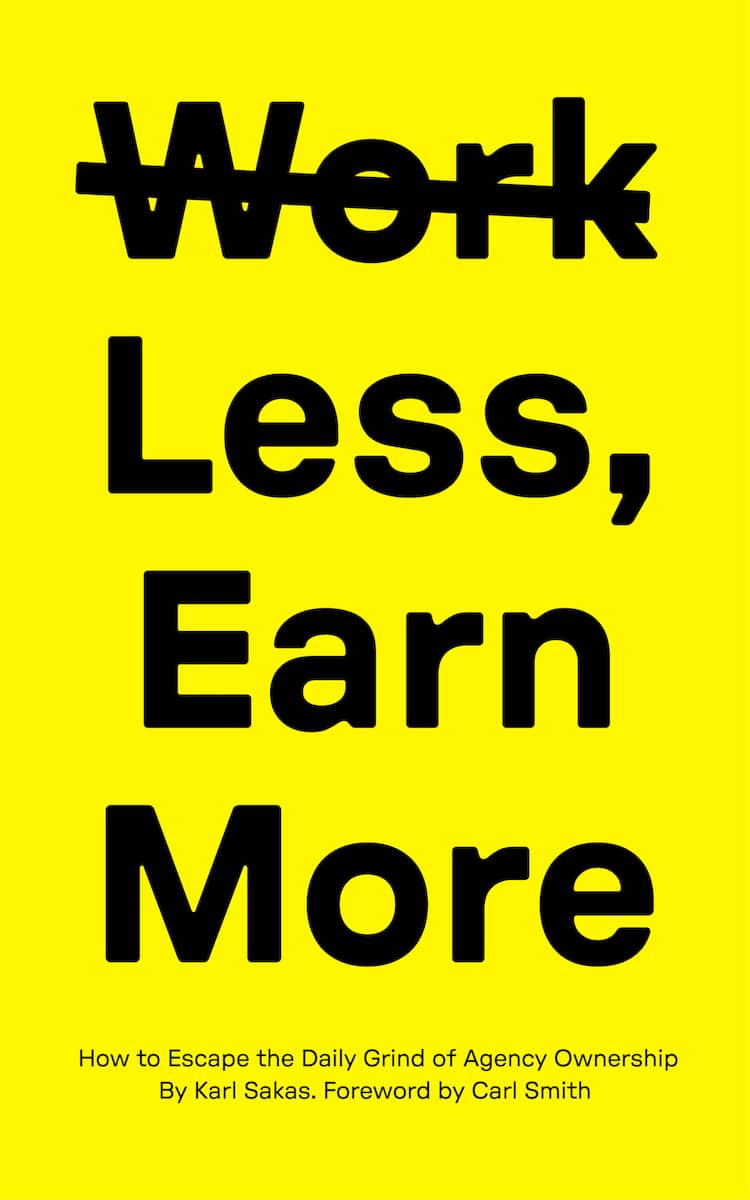
Jay Baer
The next installment of my interview series with marketing industry leaders features Jay Baer, marketing expert and New York Times best-selling author of five books. He founded and runs Convince & Convert, a digital marketing consulting and publishing firm. I had the privilege of interviewing Jay Baer before his keynote at the High Five Conference at Raleigh, NC.
Convince & Convert describes itself as a strategy consulting firm—not an agency—that helps companies gain and retain clients through an intersection of technology, social media, and customer service.
Jay and I discussed the customer service side of social media, effects of churn on marketing ROI, commoditization of digital services, virtual teams for increased efficiency, delegation, and agency growth and management.
Be sure to follow Jay on Twitter @jaybaer or learn more about him on LinkedIn.
Interview summary: My top 5 takeaways
- Customer service is the new marketing. Social media is a unique merger of technology, marketing and service.
- Reduce customer churn to improve your marketing ROI.
- Abandon the traditional agency model to increase profitability, efficiency, and enjoyment.
- Focus on bottom-line growth instead of top-line growth, to break through profit plateaus.
- As the agency owner, do only the things that you are uniquely qualified to do. Delegate the rest—slowly if necessary.
Customer Service is the New Marketing
Q: You just released your new book, Hug Your Haters. Why should owners and leaders at digital agencies read it?
Customer service has been disrupted in the exact same ways that marketing has been disrupted, for the same reasons. Mobile, social media, millennials, so all the things that digital agencies have helped clients achieve and overcome in recent years, that same opportunity exists for agencies on the customer service and customer experience side. It’s the exact same movie. It’s like Godfather Part 2, Customer Service.
The reason I wrote this book is we do a ton of digital consulting. We’re a digital strategy firm, and we get a lot of clients who understand the marketing side of social media, but aren’t sure how to handle the customer service side. We’re in an interesting age because both marketing and customer service intersect on social media. I don’t know of another case where we use the same tools, tactics and techniques for marketing that we now use for customer service.
Right now, your customers are reaching out for help on Facebook and Twitter, but we’re also using those channels for marketing. The reason I wrote the book in general, is that the difference between marketing and customer service is more semantics than reality. Customer service is the new marketing, much more so in digital than offline.
Historically, agencies have focused on customer acquisition versus retention. There’s a huge opportunity now for agencies to grow their revenue and to tap into other budgets of their clients by saying, “We’re not just in the customer acquisition business. We’re also in the customer retention business.”
Improve Marketing ROI by Reducing Churn
Q: It sounds like this is about thinking of the agency as a business consulting firm, instead of a creative agency. Where might they start?
Fred Reichheld from Bain pioneered the initial research on churn. He found that a 5% increase in customer retention could increase overall profits by 25 to 85%, because you get this geometric multiplier effect. When you keep more customers, it makes your marketing work that much harder, because each marketing dollar yields a lot more on the back end.
If you want to improve marketing ROI, stop churning customers. Digital agencies have a real opportunity now to be less transactional and more consultative.
The problem with that is with the ease of web design and mobile app construction, a lot of core digital agency services are being commoditized, and clients want to replace people with software.
Commoditization in the Agency World
Q: What do you see as the effects of commoditization of traditional digital agency services?
It’s a cycle. I noticed that digital agencies are having more of a margin pressure than they used to. I started in the industry in 1993, and from 1993 to around 2012 digital agencies had vastly better margins than traditional agencies. That isn’t the case anymore.
The Internet is great for making sure all consumers are informed. Customers will seek to inform themselves now, because they can and it’s so easy. As digital scales, software companies come in and want to replace labor with systems, automation, etc. We’re starting to see a lot of that now.
Breaking Away from Traditional Team Models for Improved Efficiency
Q: How do you approach recruiting and HR at Convince & Convert?
Fortunately, we’ve never had to actually go out and recruit in a classic sense. We have an interesting model because it’s boutique, there are only a dozen of us. Everyone is a senior staff member, there are no levels, and it’s totally virtual. I have team members in Oregon, California, Arizona, Texas, Indiana, New York, Costa Rica, and the Dominican Republic. We’re everywhere.
My policy is that we’re always hiring even if we’re not. We’re always looking for talent, because you never know when you’re going to need or want somebody. We’ve got a very deep list of potential candidates, and it’s such an unusual model that people in the digital industry will refer professionals to us even if those people aren’t ready to join us yet.
We have five team calls a year. It’s incredibly lean, and project teams come together. We don’t spend a lot of time talking about stuff. We just do stuff. The most important difference, though, is that everybody is an independent contractor. Nobody is employed by Convince & Convert other than me. Even though we’re doing work for the United Nations, Oracle, SAP, Cabela’s, Adidas, and some of the other largest brands in the world, we don’t actually have any employees.
Everybody on our team has their own business as a consultant. The Convince & Convert team spends half of their time working with me and the other half of their time doing whatever they want to do. Many of our team members have their own clients on the side, and a few team members choose to spend more time at home with their families, and things like that. Everyone is an independent business owner.
I started that model 8 years ago because I asked myself “What are the things that get in the way of profitability, efficiency, and enjoyment?” The answer was overhead, meetings, and the whole organizational chart. I asked myself, “what if we took away all of those things?”
We have no office, no titles, no junior staff or anything like that. When I started in 2008, everyone thought “this will never work,” but it has worked. We’re on the Inc. 5000 list and still going strong. It has absolutely worked.
Pressure to Grow: High Growth vs. Lifestyle
Q: I find agencies tend to lean toward either high growth or lifestyle on the growth continuum. How do you approach that?
What I find is a challenge is top line growth versus bottom line growth. Having grown multiple firms from 0 people to 100 people on the professional services side, the challenge is in the plateaus. When your top line grows, but your bottom line stays the same, your actual net margin is going down.
You may think you keep getting bigger, but you’re actually making less money. This can happen when agencies add layers of management. It’s all overhead that doesn’t actually feel like it’s helping out. There are a lot of different levels that are really difficult to break through, but once you do you begin to reap operational efficiencies.
Running a Business vs. Working in a Business
Q: When you’re running a business, you are no longer a marketer, designer or developer. You’re a business person. What is your experience with this transition?
It’s the E-Myth model. You have to take care of insurance, scheduling, and other management tasks—work on your business, not in your business. I’ve been self-employed for long enough that I’m much better at that than I used to be, but I still do a few tasks that I probably shouldn’t be doing. Sometimes it’s just faster for me to do it myself than teach someone how to do it, and other times there’s just an exception. I still send out all the invoices (I shouldn’t be [doing that]), but it’s a process that forces me to think about where we are [financially] each month.
Strategy and Delegation: Remote Team Culture and Letting Go
Q: How do you handle strategy in a remote team and how do you decide what to delegate, to make yourself “needed but not necessary”?
Every year we do our annual strategic planning meeting in person. I think this is a good policy for all agency owners. We get together in Puerto Vallarta, Mexico and rent a giant house on the beach. Everyone gets to bring their significant other and we’re small enough to pull that off.
We spend two days working and two days hanging out and drinking. Because we never see each other, it’s important to have that kind of time.
Every year, we audit my time. We figure out what I spent my time on over the course of a month, a quarter, and a year. Then, each year we plan to take 15% of those tasks away from me and figure out who should be doing that instead.
It’s like making a sauce. You start out with more liquid than you need, then reduce it to a concentrate. Throughout the years, we’ve concentrated my time and tasks to a fine sauce. I only do the things that I am uniquely qualified to do, with exceptions (like invoicing, in my case).
Nobody else in the company can do my tasks. We have five weekly podcasts now, and my team produces them but I’m the one who’s on air. If we’re going to create and present a strategic plan to a huge company in Rome, I’m [the one] going to Rome.
Generally speaking, I spend all of my time on things that only I can do. That is where you need to go. That’s the Holy Grail.
Question: What’s your top takeaway from my interview with Jay?


